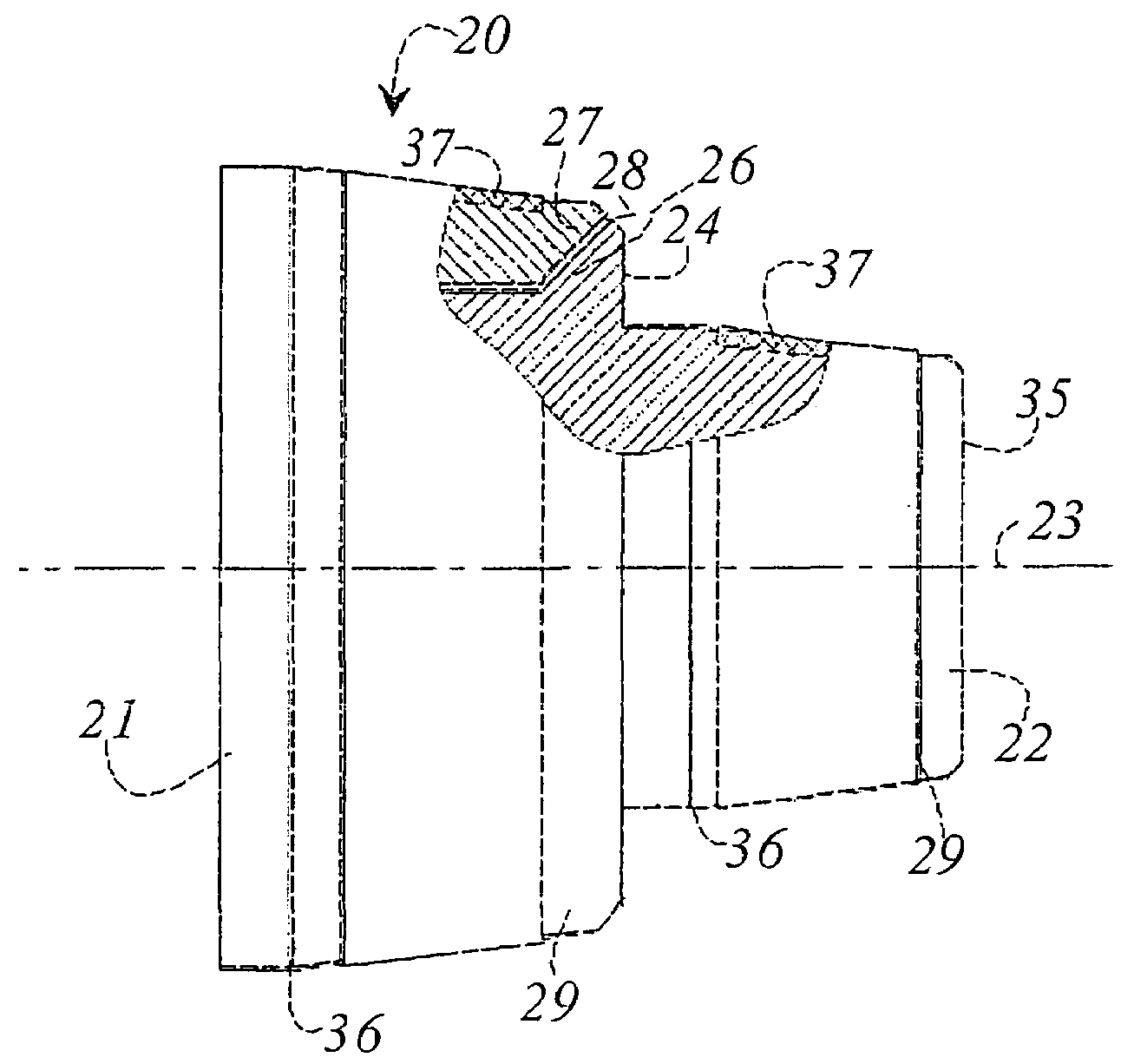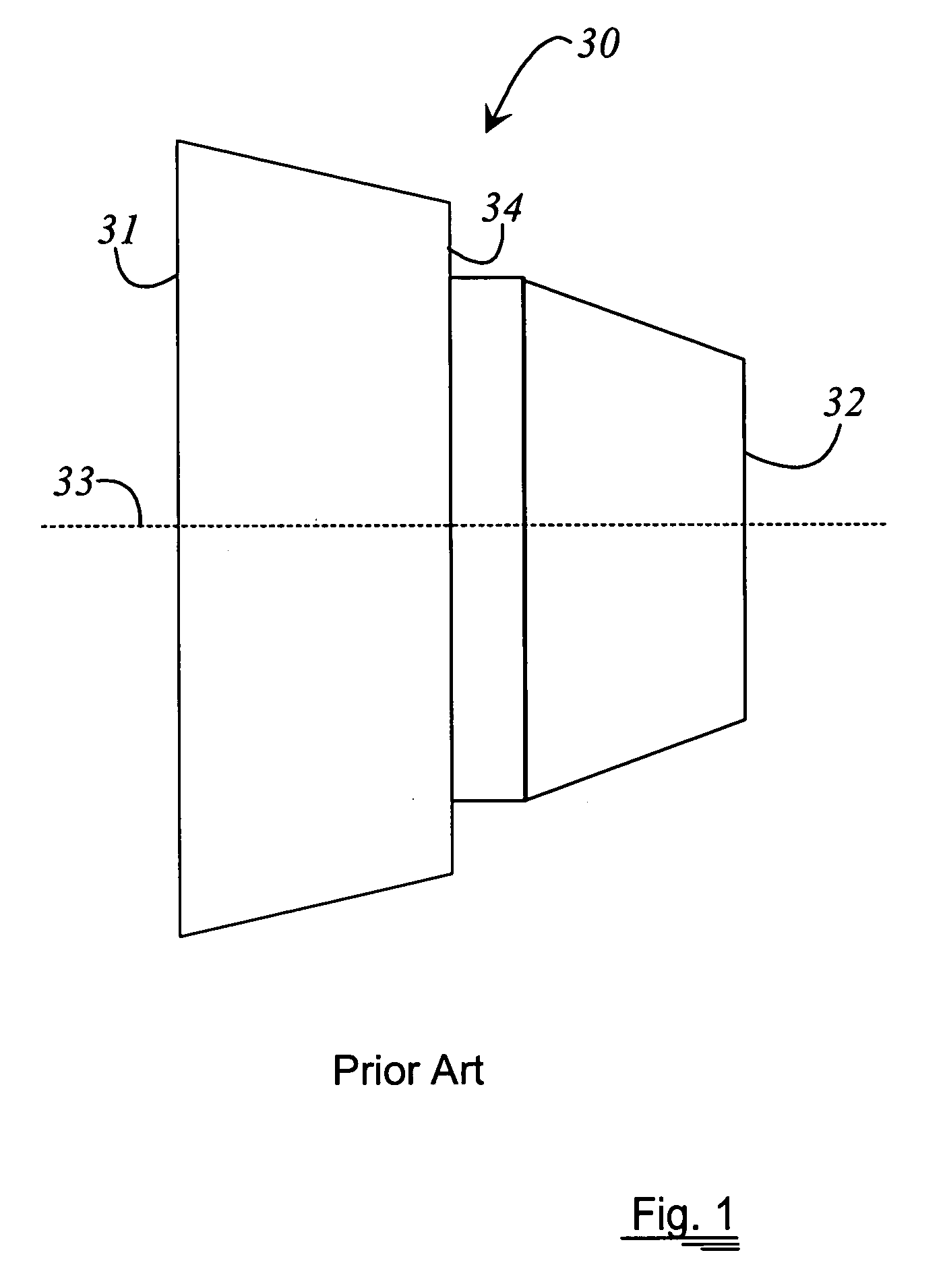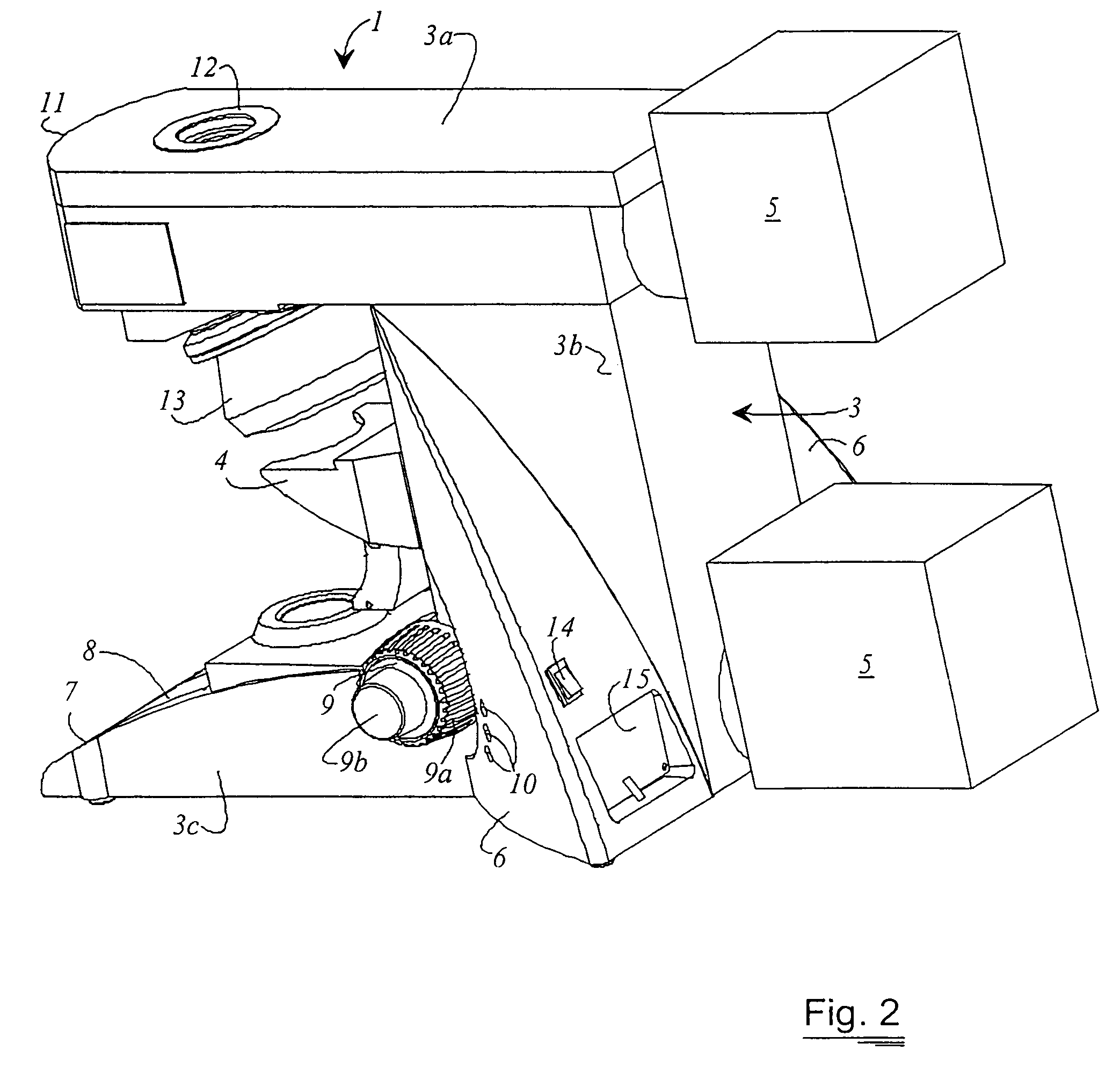Operating knob for an optical system
a technology of optical systems and knobs, applied in the field of operating knobs for optical systems, can solve the problems of axial the slipping of the actuating fingers, and the inability to safely grip the coarse focus driv
- Summary
- Abstract
- Description
- Claims
- Application Information
AI Technical Summary
Benefits of technology
Problems solved by technology
Method used
Image
Examples
first embodiment
[0024]FIG. 3 shows a side view of an operating knob 20 according to the invention. Normally, the operating knob 20 is used for the coarse and the fine adjustment of an optical system 100. For example, the optical system 100 can be a standard microscope 1. The operating knob 20 according to the invention is the most relevant element for positioning. In FIG. 3 the optical system 100 is partly shown to demonstrate the arrangement of the operating knob 20 at the optical system 100. The operating knob 20 comprises of a first and a second rotating element 21 and 22 both of which are arranged coaxially around a common axis 23. The first and the second rotating element 21 and 22 are rotatable independently around the axis 23. The first rotating element 21 abuts directly at the optical system 1. The second rotating element 22 is arranged downstream of the first rotating element 21. The first and the second rotating element 21 and 22 have at least partly conical form, and the first rotating e...
second embodiment
[0025]FIG. 4 shows a side view of the operating knob 20, whereby parts of the first and the second rotating element 21 and 22 are shown as a sectional drawing to demonstrate the cooperation of the first and the second rotating element 21 and 22. As already described in FIG. 3. the second rotating element 22 has a step 24 which approximately has the diameter of the first rotating element 21. The first rotating element 21 has a cone shaped depression 27, formed in the direction to the axis 23. Also step 24 of the second rotating element 22 has a cone shaped flank 26, so that both elements can be matched into one another and interact in a way that between the first and the second rotating element 21 and 22 a separating groove 28 is formed. By the separating groove 28, a free rotation of the first rotating element 21 with respect to the second rotating element 22 is possible, also the position of the separating groove 28 ensures that while actuating the second rotating element 22 no uni...
PUM
 Login to View More
Login to View More Abstract
Description
Claims
Application Information
 Login to View More
Login to View More - R&D
- Intellectual Property
- Life Sciences
- Materials
- Tech Scout
- Unparalleled Data Quality
- Higher Quality Content
- 60% Fewer Hallucinations
Browse by: Latest US Patents, China's latest patents, Technical Efficacy Thesaurus, Application Domain, Technology Topic, Popular Technical Reports.
© 2025 PatSnap. All rights reserved.Legal|Privacy policy|Modern Slavery Act Transparency Statement|Sitemap|About US| Contact US: help@patsnap.com



